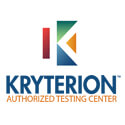Installing and Configuring Windows 10 (70-698)
About This Course
Windows 10 besides addressing the various concerns users encountered with Windows 8 delivers the stability of Windows 7 with improved security features. Installing and Configuring Windows 10 coursework covers all the essentials to install and configure core services, operating systems and trains on industry-best practices for ongoing management and maintenance. The coursework prepares professionals for 70-698 exam, which accounts to the quintessential Windows 10 MCSA certification.
Professionals for Installing and Configuring Windows 10 70-698 exam are mainly IT experts, who want to validate their expertise and skills to install and configure Windows. The coursework enables you to implement Windows, configure core services, provide support and maintain/manage Windows.
Who Should Attend This Course
Professionals ideal for this exam include IT experts, who perform configuration, installation and maintenance of Windows 10 core services. Candidates with exposure to enterprise IT settings or cloud-based services too can opt for this exam.
- IT Professionals
- Data Center Engineers
- Network Administrators
- System Administrators
- Network Engineers
- System Engineers
Why This Course
Windows 10 addresses critical concerns users encountered with Windows 8 and offers improved security aspects. Installing and Configuring Windows 10 covers important aspects to install and configure core services and operating systems with industry-best practices. The coursework prepares you for 70-698 exam, which is a key to Windows 10 MCSA certification.
- Installing Windows 10
- Setting up multi-boot configurations
- Configuring devices and drivers
- Customizing user interface
- Administering Windows with Group Policy and ICD
- Activating Windows
- Setting up networking including name resolution, IPv4/IPv6, VPN and wireless
- Configuring disks and Storage Spaces
- Implementing security for shared drives/folders including NTFS
- Deploying Access Control
- Configuring OneDrive sharing rights
- Deploying desktop apps
- Setting up Remote Assistance, PowerShell remoting and Remote Desktop
- Configuring User Account Controls
- Fine-tuning Windows updates
- Recovering and restoring damaged systems
- Recovering deleted history and files
- Performing backups
- Providing file and app share access
- Setting up Credentials
- Automating administrative tasks with PowerShell
- Optimizing Windows services
Course Objectives
- Implement Windows
- Configure and support core Windows services
- Maintain and manage Windows
Course Prerequisites
Experience with Windows (7, Vista, 8 or 8.1) either at work or at home. Some knowledge of PowerShell as well as command prompt will be excellent.
Course Benefits
Prepares you for 70-698 exam and helps you in:
- Installing Windows 10
- Setting up multi-boot configurations
- Configuring devices and drivers
- Customizing user interface
- Administering Windows with Group Policy and ICD
- Activating Windows
- Setting up networking including name resolution, IPv4/IPv6, VPN and wireless
- Configuring disks and Storage Spaces
- Implementing security for shared drives/folders including NTFS
- Deploying Access Control
- Configuring OneDrive sharing rights
- Deploying desktop apps
- Setting up Remote Assistance, PowerShell remoting and Remote Desktop
- Configuring User Account Controls
- Fine-tuning Windows updates
- Recovering and restoring damaged systems
- Recovering deleted history and files
- Performing backups
- Providing file and app share access
- Setting up Credentials
- Automating administrative tasks with PowerShell
- Optimizing Windows services





























